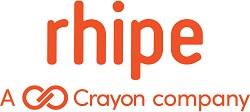*Disclaimer Lorem ipsum dolor sit amet, consectetur adipisicing elit, sed do eiusmod tempor incididunt ut labore et dolore magna aliqua. Ut enim ad minim veniam, quis nostrud exercitation ullamco laboris nisi ut aliquip ex ea commodo consequat. Duis aute irure dolor in reprehenderit in voluptate velit esse cillum dolore eu fugiat nulla pariatur. Excepteur sint occaecat cupidatat non proident, sunt in culpa qui officia deserunt mollit anim id est laborum.
rhipe has created a series of tips and tricks to help you, our partner optimise and fine tune your deployments. Our aim is that these tips help to provide cost and operational efficiencies.
rhipe with support from Red Hat has created a team of experts dedicated to increasing CCSP program benefits, reducing your business risk, optimising your deployments and costs to drive greater value for you and your customers.
We understand the impact on your business and your clients during challenging times and we want to do all we can to help. Our key objective is to ensure business continuity for you and your customers so we have created a list of 7 tips and tricks focused on cost savings, usage improvements, and innovative solutions that will help fine tune your customers’ infrastructure.
The Red Hat CCSP Program has been designed to support all service provider models, allowing cloud, hosting, system integrator and managed service providers to host and resell certified Red Hat offerings on-demand via multi-tenant, dedicated and managed models.
CCSP Partners use Red Hat infrastructure and guest offerings to serve customers with secure, scalable, and supported enterprise solutions with specific business and operational models. Typical offerings from providers include hosted physical machines, self-service virtual machines, hosted virtual private clouds, fully managed services, and outsourcing.
It's critically important that you understand how to monitor resource consumption within your offerings, fine-tune and optimise them wherever possible. The only way you can reduce costs is by knowing what you have running within your environment so that we can optimise your licensing. Use your Red Hat Satellite to have a deeper understanding of your Red Hat ecosystem.


